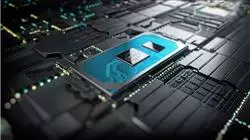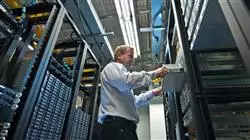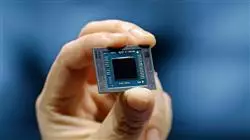University certificate
The world's largest faculty of information technology”
Introduction to the Program
This program will allow you to update your knowledge in Computer Structure in a practical way, 100% online, without renouncing to the maximum academic rigor"

This program is aimed at those people interested in reaching a higher level of knowledge in Computer Structure. The main objective is to enable the student to apply in the real world the knowledge acquired in this course, in a work environment that reproduces the conditions that may be encountered in the future, in a rigorous and realistic manner.
The program will prepare students for the professional practice of computer engineering, thanks to a transversal and versatile training adapted to new technologies and innovations in this field. You will obtain extensive knowledge in Computer Structure, from the hand of professionals in the sector.
The students will be able to take the opportunity and study this program in a 100% online format, without neglecting their obligations.
Learn the latest techniques and strategies with this program and achieve success as a computer engineer"
This Postgraduate certificate in Computer Structure contains the most complete and up-to-date program on the market. The most important features include:
- Development of 100 simulated scenarios presented by experts in Computer Structure
- Its graphic, schematic and eminently practical contents provide scientific and practical information on the Computer Structure
- News on the latest developments in Computer Structure
- It contains practical exercises where the self-assessment process can be carried out to improve learning
- Interactive learning system based on the case method and its application to real practice
- All of this will be complemented by theoretical lessons, questions to the expert, debate forums on controversial topics, and individual reflection assignments
- Content that is accessible from any fixed or portable device with an Internet connection
Get trained in Computer Structure with this intensive program, from the comfort of your home"
It includes in its teaching staff professionals belonging to the field of education, who bring to this program their work experience, in addition to recognized specialists belonging to reference societies and prestigious universities.
Thanks to its multimedia content elaborated with the latest educational technology, this program will allow the professional a situated and contextual learning, that is to say, a simulated environment that will provide an immersive learning programmed to work in real situations.
This program is designed around Problem-Based Learning, whereby the professional must try to solve the different professional practice situations that arise throughout the program. For this purpose, the professional will be assisted by an innovative interactive video system created by renowned experts in Computer Structure with extensive teaching experience.
Take advantage of the latest educational technology to get up to date in Computer Structure without leaving home"

Learn about the latest techniques in Computer Structure from experts in the field"
Syllabus
The structure of the contents has been designed by a team of computer engineering professionals, aware of the relevance of current training in order to deepen this area of knowledge in order to humanistically enrich the student and raise the level of knowledge in Computer Structure through the latest educational technologies available.

This study of Computer Structure contains the most complete and up-to-date learning program on the market"
Module 1. Computer Structure
1.1. Fundamentals of Computer Design and Evolution
1.1.1. Definition of Computer Architecture
1.1.2. Evolution and Performance of Architectures
1.1.3. Parallel Architectures and Levels of Parallelism
1.2. Computer Performance Evaluation
1.2.1. Performance Measures
1.2.2. Test Programs (Benchmarks)
1.2.3. Improved Performance
1.2.4. Costs of a Computer
1.3. Leveraging the Memory Hierarchy
1.3.1. Memory Hierarchy
1.3.2. Basic Concepts of the Cache
1.3.3. Cache Evaluation and Improvements
1.3.4. Virtual Memory
1.4. Storage and Other Input/Output Aspects
1.4.1. Reliability, Dependability and Availability
1.4.2. Disk Storage
1.4.3. Flash Storage
1.4.4. Connection and Information Transfer Systems
1.5. Segmented Processors
1.5.1. What are Segmented Processors?
1.5.2. Principles of Segmentation and Performance Enhancement
1.5.3. Segmented Processor Design
1.5.4. Optimization of Functional Channels
1.5.5. Interrupt Handling on a Segmented Processor
1.6. Superscalar Processors
1.6.1. What are Superscalar Processors?
1.6.2. Parallelism between Instructions and Machine Parallelism
1.6.3. Superscalar Instruction Processing
1.6.4. Jump Instruction Processing
1.6.5. Interrupt Handling on a Superscalar Processor
1.7. VLIW Processors
1.7.1. What are VLIW Processors?
1.7.2. Exploiting Parallelism in VLIW Architectures
1.7.3. Compiler Support Resources
1.8. Vector Processors
1.8.1. What are Vector Processors?
1.8.2. Vector Architecture
1.8.3. The Memory System in Vector Processors
1.8.4. Performance Measurements on Vector Processors
1.8.5. Vector Processing Efficiency
1.9. Parallel Computers
1.9.1. Parallel Architectures and Levels of Parallelism
1.9.2. Motivation to the Study of Parallel Computers
1.9.3. Design Space. Classification and General Structure
1.9.4. Performance on Parallel Computers
1.9.5. Classification of Communication Systems in Parallel Computers
1.9.6. General Structure of the Communication System in Parallel Computers
1.9.7. The Network Interface in Parallel Computers
1.9.8. The Interconnection Network in Parallel Computers
1.9.9. Communication System Performance on Parallel Computers
1.10. Interconnection Networks and Multiprocessors
1.10.1. Topology and Types of Interconnection Networks
1.10.2. Switching in Interconnection Networks
1.10.3. Flow Control in Interconnection Networks
1.10.4. Routing in Interconnection Networks
1.10.5. Memory System Coherence on Multiprocessors
1.10.6. Multiprocessor Memory Consistency
1.10.7. Multiprocessor Synchronization

A unique, key, and decisive educational experience to boost your professional development”
Postgraduate Certificate in Computer Structure
In an increasingly digital world, training in the field of computer structure becomes essential. At TECH Global University we have developed a Postgraduate Certificate that provides complete training in the design and development of hardware and software systems, from the perspective of computer structure. During the program, the latest trends in system design will be addressed, as well as the practical application of techniques for performance optimization and troubleshooting in the different components of a system. In addition, the design of high-speed networks, memory and storage architecture, and the use of modeling and simulation tools for the development of innovative projects will be discussed.
The knowledge of computer structure is fundamental for the design of efficient systems with high information processing capacity. Our Postgraduate Certificate will emphasize the formation of highly trained professionals to face the challenges of the digital world, through the acquisition of skills in the identification and resolution of problems in complex systems, the development of efficient and scalable solutions, and teamwork to achieve objectives. Likewise, current topics such as the design of cloud computing systems, optimization of systems for processing large volumes of data, and computer security in system design will be addressed.







